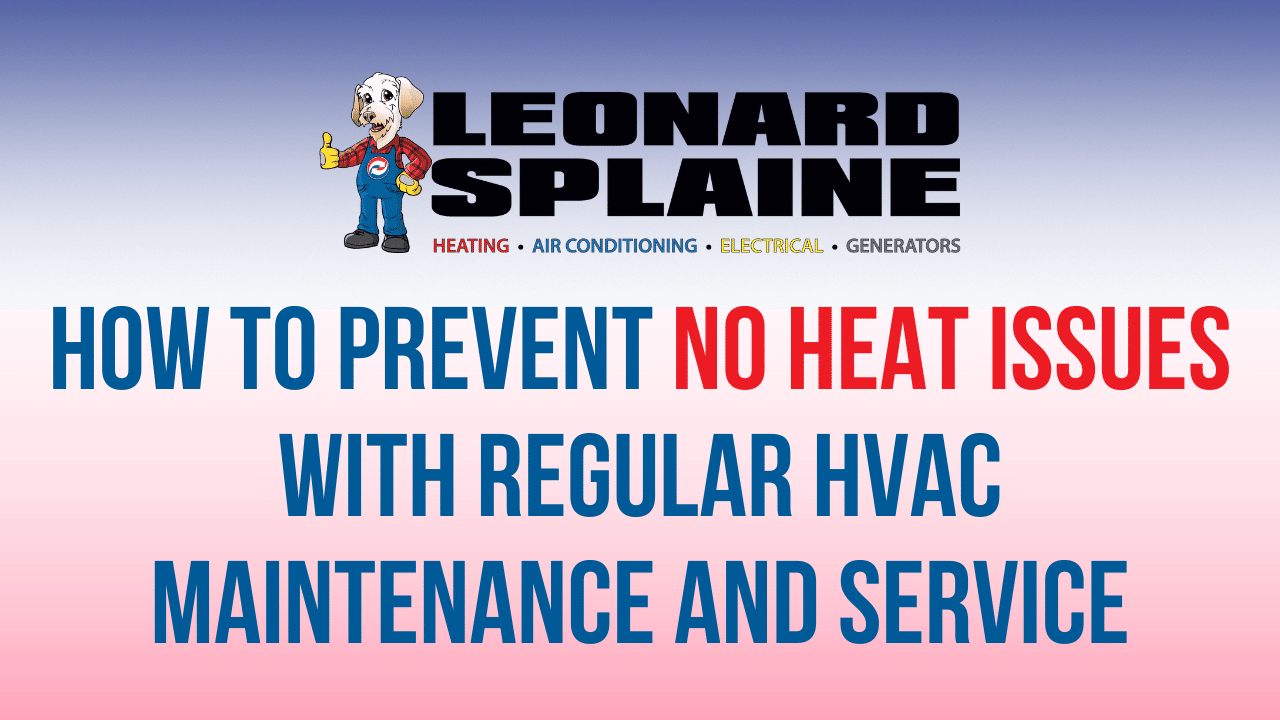Leonard Splaine How to Prevent No Heat Issues with Regular HVAC Maintenance and Service

When winter rolls around, the last thing you want is to experience a sudden heating failure. A breakdown of your HVAC system can leave you in the cold, both figuratively and literally, leading to discomfort and inconvenience. Fortunately, with regular HVAC maintenance and service, you can avoid the most common heating issues and ensure your home stays warm all season long. Here’s how routine maintenance can help you prevent no-heat problems and keep your system running efficiently.
1. Catch Problems Before They Escalate
One of the primary reasons HVAC maintenance is crucial is that it helps identify potential issues before they turn into major problems. During a routine inspection, an HVAC technician will check various components of your heating system, including the furnace, blower motor, heat exchanger, and thermostat. They’ll look for signs of wear and tear, blockages, and damage that could lead to a failure. By catching these problems early, repairs can be made before the heating system stops working altogether.
2. Keep Your Furnace Clean
A dirty furnace is more prone to breakdowns and inefficiencies. Dust, dirt, and debris can accumulate inside your furnace, blocking airflow, reducing efficiency, and even causing it to overheat. During regular HVAC maintenance, the technician will clean the furnace, including the burner and heat exchanger. A clean furnace is not only less likely to break down but also runs more efficiently, lowering your energy bills.
3. Ensure Proper Airflow and Ventilation
A clogged or restricted airflow is one of the most common causes of heating problems. If the airflow is obstructed, your furnace may struggle to circulate warm air throughout your home, causing uneven heating or complete system failure. Regular HVAC maintenance includes checking the ducts and vents for blockages, dirt, or damage that could obstruct airflow. The technician will also inspect the blower motor and ensure it’s operating correctly. Proper airflow ensures that warm air circulates evenly, preventing your system from working harder than necessary.
4. Check the Thermostat Calibration
Your thermostat plays a crucial role in regulating your home’s temperature. If it’s not calibrated correctly, it could cause your heating system to cycle on and off too often or fail to reach the desired temperature. During maintenance, a technician will check and calibrate the thermostat to ensure it’s reading temperatures accurately. This simple adjustment helps ensure your home stays at the right temperature and prevents unnecessary wear on your heating system.
5. Replace the Air Filter Regularly
A clogged or dirty air filter can restrict airflow and cause your furnace to work harder than it needs to. This not only reduces its lifespan but can also lead to overheating, breakdowns, and no-heat situations. HVAC maintenance includes checking and replacing the air filter as needed. It’s essential to change your air filter every 1-3 months, depending on your system and usage. A clean air filter ensures proper airflow and prevents strain on the system, reducing the risk of a heating failure.
6. Inspect and Maintain the Heat Exchanger
The heat exchanger is a critical component of your heating system that transfers heat to the air circulating through your home. If it’s cracked or damaged, it can cause your furnace to fail and lead to dangerous carbon monoxide leaks. Regular HVAC maintenance includes inspecting the heat exchanger for any signs of damage or wear. If issues are detected early, the technician can replace the part before it leads to a more significant and costly problem.
7. Lubricate Moving Parts
Over time, the moving parts in your HVAC system, such as the fan and blower motor, can become dry or worn out. This can cause excessive friction, leading to premature wear and eventual breakdown. Regular maintenance includes lubricating these moving parts to ensure smooth operation. Keeping the components well-lubricated reduces the risk of mechanical failure and helps your heating system run efficiently.
8. Test System Performance
Before the heating season begins, it’s a good idea to have your HVAC system tested to ensure it’s ready for the colder months. During a routine maintenance visit, the technician will run a series of tests to assess the overall performance of your system. This includes checking the burner, pilot light, ignition system, and fuel lines for any issues. Testing the system in advance gives you peace of mind that your heating system will function when you need it most.
Best HVAC Maintenance in Chantilly, VA & Nearby Areas
Investing in regular HVAC maintenance is one of the best ways to prevent no-heat issues. It ensures your system is running efficiently, identifies potential problems early, and keeps your home comfortable all winter long. At Leonard Splaine CO., we offer comprehensive HVAC maintenance services to help you avoid the frustration of a heating failure. Don’t wait for your system to break down—schedule your HVAC maintenance today and stay warm all season. For more information or to book an appointment, visit our website or contact us to speak with one of our experienced technicians.
